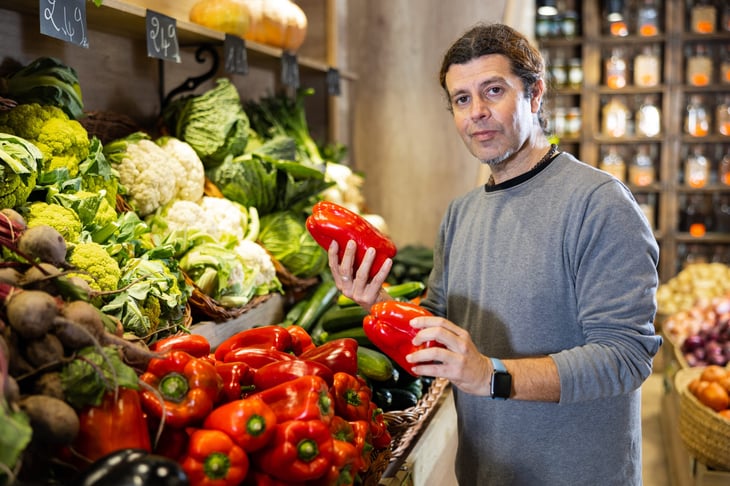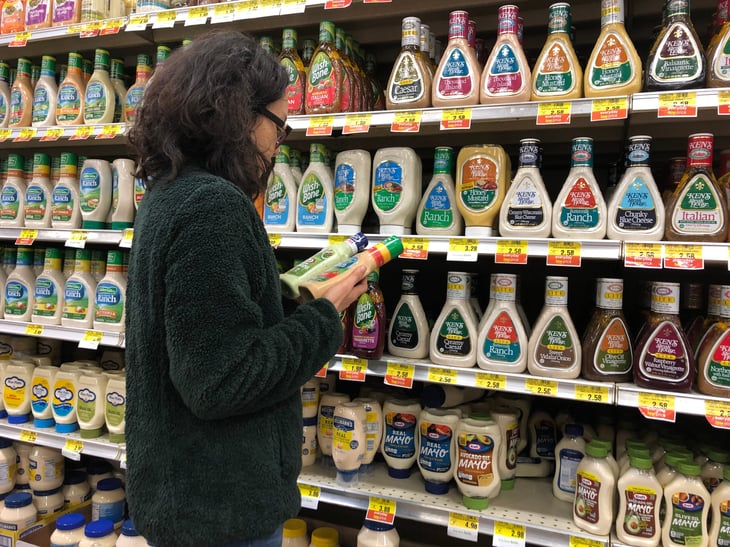
Grocery list? Check. Coupons? Got ’em. Eat a snack so you won’t shop hungry? Done. Mentally prepared to resist impulse buys? Totally.
Now you’re properly prepared for your weekly trip to the supermarket. Or are you?
No matter how hard you try, supermarkets often find a way to eat up more of your budget than you bargained for. But don’t feel bad. Instead, learn the gimmicks grocery stores use — and how you can avoid them.
Following is a look at some of the common tactics you might not have realized were being used against you at the grocery store.
1. Using a clever store layout

Store layouts are often a mix of the strategic and the practical. It’s no coincidence that staples like milk, bread and eggs are placed in vastly different locations within the store, and nowhere near the entrance.
It is possible to run a gauntlet of 10,000 impulse buys on your way to the milk without succumbing — but it sure isn’t easy.
Solution: Stay focused on buying what you need, and nothing more. Remember your long-term goals, which likely include staying out of debt and becoming financially independent. If you spend $25 per week on impulse buys, you’ve just lost $1,300 over the course of a year that could have been used to pay down debt or to fund your retirement.
2. Tempting you to buy foods that ‘go together’

You spot a bag of some heavily-advertised tortilla chips. That’s OK — you’ve got a coupon. Too bad you don’t have another coupon for those jars of salsa sitting next to them.
In the blink of an eye, they’re both in your cart. So much for that carefully planned list.
Solution: Coupons are great — but only when they are for things you really need. Using a coupon to buy something not on your list starts you down the slippery slope to overspending. Only use coupons for things you truly need.
3. Sending sweet smells through the air

It’s a secret that real estate agents have known for years: The smell of freshly-baked cookies can help turn an open house into your next home.
If the smell of fresh-baked cookies will persuade you to drop $200,000 on a house, how are you supposed to resist dropping $4.95 on fresh-baked cookies?
There are entire companies built around the idea of “scent marketing.” So if something smells fishy, you’re probably right.
Solution: Make sure to eat something at home before shopping. That way, you won’t be hungry when you head down “temptation aisle” at the grocery store.
4. Offering biggie-sized carts

The size of grocery store carts has been growing for years. Not only does a giant cart allow you to buy more, a half-empty cart makes it appear you’re missing something.
Solution: Don’t use a cart. Only buy what you can carry in both hands.
5. Making clever use of shelf placement

The most profitable items are often placed at eye level because research has shown that’s where we look first. If you’re looking for mustard, for example, you’ll immediately spot the gourmet and spiced mustards, but you may have to look down a shelf or two to find the more budget-friendly house brands.
Solution: Always look high and low on the shelves to make sure you’re not missing a better deal.
6. Enticing you to grab items at the checkout lane

Another home for profitable items is the checkout lane. While you’re waiting for the cashier to ring you up or the line for self-checkout to clear, you could easily pick up a magazine or a pack of chewing gum.
Solution: Flip through a magazine if you must. Just put it back before you pay. Hey, if they don’t like you thumbing through it, they shouldn’t have made you wait. As for other temptations, keep your eye on the prize — staying out of debt.
For more tips on flexing your financial self-discipline muscles, check out “11 Tips and Tricks That Will Keep You From Overspending.”
7. Promoting ‘deals’ that are no bargain

Sometimes, promotions help you save a few bucks. Other times, they don’t. Ten cups of Greek yogurt for $10 may seem like a deal, but will you be able to eat your money’s worth before they expire?
Solution: When something is promoted as being “10 for $10,” it almost always means you can buy fewer of that same item and get the same bargain price. After all, while, “10 for $10” is probably no deal, “3 for $3” surely is.
8. Moving things around

If you have a regular grocery store, you quickly get to have a good idea of where things are. Once you memorize the layout, you can get in and out fast.
But research shows the longer we spend in stores, the more we start to shop emotionally instead of rationally. Our shopping stamina runs out.
So moving things around is one way to run down the clock on shoppers, while also forcing us to look more carefully at the shelves — exposing us to other enticing options.
Solution: Don’t hesitate to ask an employee for something that’s not in its usual spot. Just don’t get mad if they’re as confused as you are; it can’t be easy to keep up with the endless shuffle.





Add a Comment
Our Policy: We welcome relevant and respectful comments in order to foster healthy and informative discussions. All other comments may be removed. Comments with links are automatically held for moderation.